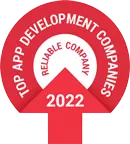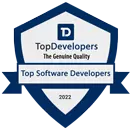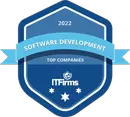Developing Methods and Algorithms to Determine a Geo Distribution of Cancer
Description
The National Scientific and Practical Children’s Center of Oncology and Hematology asked to develop methods and algorithms as well as a software system that would build and visualize clusters representing the geographical distribution of cancer incidence.
The customer
The customer is the National Scientific and Practical Children’s Center of Oncology and Hematology that provides treatment to children of up to 18 years of age with all types of hematological and oncological pathologies (except for thyroid gland cancer), as well as in-born immune deficiencies. The Center performs transplantation of peripheral stem cells, mesenchymal cells, and umbilical cord blood cells as well as marrow-bone transplantation. Medical services are provided by highly skilled experts, including five Ph.D.’s of Medical Sciences and 16 Candidates of Sciences.
The need
Malignant tumors in children are a complex social and economic problem as the cost of therapy for tumors and the death rates are very high. Despite significant achievements in treatment, this type of disease is one of the leading causes of death for children in the world. Taking into account the fact that malignant tumors in children are relatively rare, standard epidemiological methods do not work. In order to determine relations between cause and effect and improve the efficiency of preventive measures, we need a large sample of cases.
Over the last decade, dimensional and dimensional-temporal methods of cluster analysis became widely spread in research of geographical distribution of various types of disease. These methods are designed to determine and build clusters of communities with increased incidence of diseases. The task was to develop methods and algorithms as well as a software system that would build and visualize clusters representing the geographical distribution of cancer incidence in children and teenagers.
The solution
We developed statistical criteria for global clustering to determine, if there is any clustering of disease incidence on the territory under consideration.
We also created methods and algorithms for local clustering that make it possible to build clusters representing geographical distribution of increased incidence of disease during a particular period of time.
Finally, we built a software system for building and visualizing clusters that represent incidence of cancer.
The outcome
The software system developed by our institute made it possible to single out clusters of regions and communities with increased incidence of leukemia, carcinoma, and other malignant tumors. If we can determine the regions and communities with the highest risk of cancer, this information can be used for early diagnosis of this type of diseases. Thus, we can save the lives of many children.
Seeking a solution like this?
Contact us and get a quote within 24 hours


























